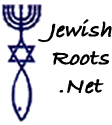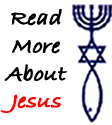






![]()
Among many Christians, there has been concern that things have gotten out of hand. After all, doesn’t Halloween glorify evil? Is it right to send our children out as devils and vampires, or is it better to emphasize the saints, whose nearly forgotten feast day is the reason for Halloween?
Hallow is the same word for "holy" that we find in the Lord’s Prayer, and e’en is a contraction of "evening." The word Halloween itself is a shortened form of "All Hallows Eve," the day before All Saints Day. This holiday, properly understood and celebrated with all of its fun trappings, can be a way for us to deepen our understanding of our faith.
Until the ninth century the Church celebrated the popular feast of All Saints on May 13th, during the season of joy after the Resurrection. This is the light in which we see all the faithful who have died, especially those whose witness to Christ is an inspiration. In 835 the date was deliberately changed to November 1 to Christianize the existing pagan time for remembering the dead—to bring light to the darkness, and hope to the most basic of human fears.
The same way people gather today at the site of a tragedy on its anniversary to talk to each other and to reporters, the first Christians gathered on the anniversary of a martyr’s death to remember it the way they knew best: with the "breaking of the bread." They retold the stories to inspire each other at a time when faith meant persecution and more martyrdom. Not even death could break the unity in Jesus which Paul had named "the Body of Christ."
Anniversaries of local and well-known martyrs peppered the calendar. Then a pragmatic question arose: What honor should be given to martyrs whose names were unknown? Many Christians were thrown to the lions for witnessing to their faith, not all of them known to the community. By the mid-fourth century a feast of "All Martyrs" appeared on local calendars. As persecutions grew less frequent, the feast was extended to include non-martyr "witnesses," Christians whose lives were "the gospel in action," as St. Francis de Sales would later call the saints.
For the first 1,000 years of Christianity there was no collective memorial for All Souls. Relatives and loved ones were remembered at Mass on the anniversary of their death, or until they passed out of living memory. But by the seventh century monasteries were celebrating an annual Mass for all the deceased of their order, an idea which spread to the laity. About 1048, an influential abbot chose November 2 to commemorate All Souls because it was an obvious companion date and extension of the Feast of All Saints. Both days are reminders that all of us, living and dead, are united in a living communion with Christ and one another.
In effect, Halloween became one vigil for two feasts celebrated by the whole Church. In the 16th century at the time of the Reformation, most Protestants discarded both the doctrine of the communion of saints and the practice of praying for the dead. All Hallows Eve became "hollow" for them, the vigil of an empty feast day.
The folktale of "Jack o’ the Lantern" arrived with early Irish Catholic colonists in Maryland. It quickly grew in popularity because of the independent spirit admired in this country. Jack has the cleverness to outwit the devil himself, but it isn’t enough to get him into heaven. He must roam forever between heaven and earth, holding his pumpkin lantern high. (Originally the lantern was cut from a turnip; after the story crossed the ocean, colonists changed it to the colorful vegetable they found here, the pumpkin.)
![]() Communion Of Saints Day was a day that was set aside to honor those who had died serving our Messiah.
Communion Of Saints Day was a day that was set aside to honor those who had died serving our Messiah.
JewishRoots.Net thinks that if a person decides they want to celebrate this holiday there are ways to do it and serve God at the same time. Try handing out a gospel track or ten commandments pencil with the candy. This holiday has become a part of American culture. Many times the original source of a holiday is forgotten or modified throughout history. This holiday, like any other holiday can mean what you want it to mean. At first thought it is easy for a Christian to want to just turn the light off so your house is passed over. However, on second thought, why give this day over to Satanic influences when it is a day that the Lord has made and we should be glad and rejoice in it. You might want to consider trying to find a way to let God's light shine on all the darkness. What about an empty tomb in the form of a first century cave/tomb in your yard as you Halloween decoration. When people come through and see that nothing is in it, at first they might not understand. But a sign near the exit of the tomb could say something like "The tomb is empty because Christ has risen."
Many churches now sponsor a "trunk or treat where youth groups show up at church and adults have candy in the trunks of their cars. Cars are parked in a big circle backed in towards each other. The children can then go trunk to trunk and collect their candy.
Read about Secular Holidays:
http://www.chaldean.org/NewsInformation/LawOrder/tabid/66/articleType/ArticleView/articleId/186/categoryId/5/Returning-The-Christian-Halloween-Holiday.aspx